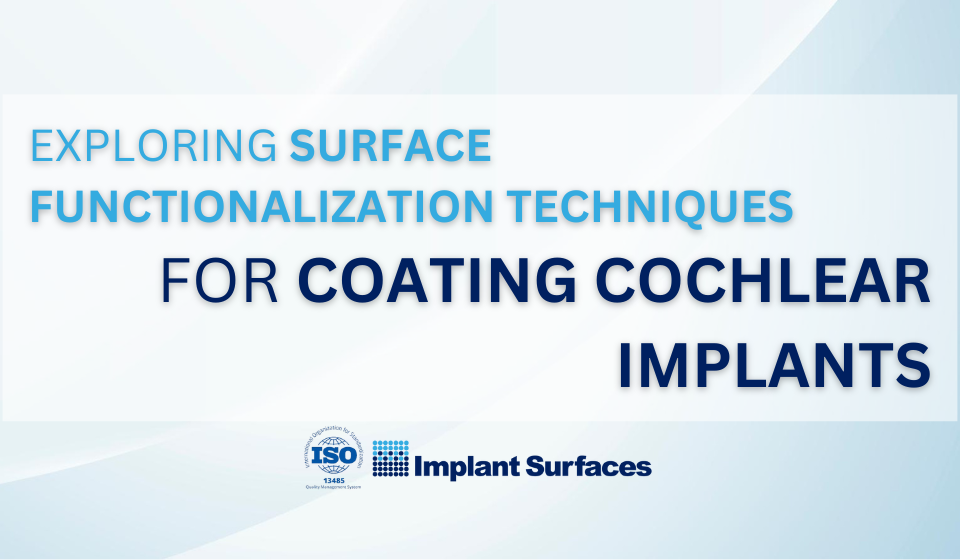
Unlocking Dental Implant Integration: The Power of Plasma Surface Treatment
April 25, 2024Implant technology continues to evolve, with a particular focus on enhancing patient outcomes and treatment efficacy. One area of significant advancement lies in stimuli-responsive coatings, which offer precise control over drug release from implants. This article explores the latest innovations in designing stimuli-responsive coatings and their potential applications in improving therapeutic outcomes for patients.
Stimuli-Responsive Coatings:
Stimuli-responsive coatings are engineered to release drugs in response to specific environmental cues or triggers. These coatings can be tailored to respond to various stimuli, including changes in pH, temperature, light, or the presence of specific molecules. By harnessing these stimuli, clinicians can achieve targeted and on-demand drug delivery, minimizing side effects and optimizing treatment efficacy.
Design Considerations:
Designing stimuli-responsive coatings requires careful consideration of several factors, including the choice of responsive materials, coating thickness, and trigger mechanisms. Biocompatibility, stability, and durability are paramount to ensure the safety and longevity of the implant. Additionally, the selection of drugs and their encapsulation within the coating matrix must be optimized to achieve the desired release kinetics and therapeutic concentration.
Applications in Implantology:
Stimuli-responsive coatings hold immense potential across various fields of implantology, including orthopedics, dentistry, and cardiology. In orthopedics, these coatings can be utilized in joint implants to deliver anti-inflammatory drugs or growth factors, promoting tissue regeneration and reducing inflammation. In dentistry, implants coated with stimuli-responsive materials can release antimicrobial agents to prevent peri-implant infections and support tissue healing. Similarly, cardiovascular implants coated with drug-eluting coatings can prevent restenosis and thrombosis, improving long-term outcomes for patients.
Future Directions:
As research in stimuli-responsive coatings progresses, future developments are expected to focus on enhancing coating stability, responsiveness, and biocompatibility. Advancements in nanotechnology and biomaterial science offer exciting opportunities to engineer coatings with tunable properties and multifunctional capabilities. Moreover, the integration of smart sensors and feedback mechanisms may enable real-time monitoring of drug release kinetics, further optimizing treatment protocols and patient care.
Conclusion:
Stimuli-responsive coatings represent a cutting-edge approach to drug delivery in implantology, offering precise control over therapeutic release while minimizing systemic side effects. By harnessing the principles of material science and biomedical engineering, clinicians can revolutionize the field of implantology, ushering in a new era of personalized and targeted therapies. As research continues to push the boundaries of innovation, stimuli-responsive coatings hold promise for improving patient outcomes and quality of life across diverse clinical applications.




